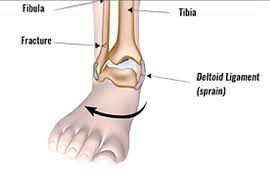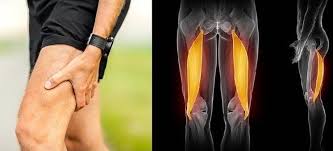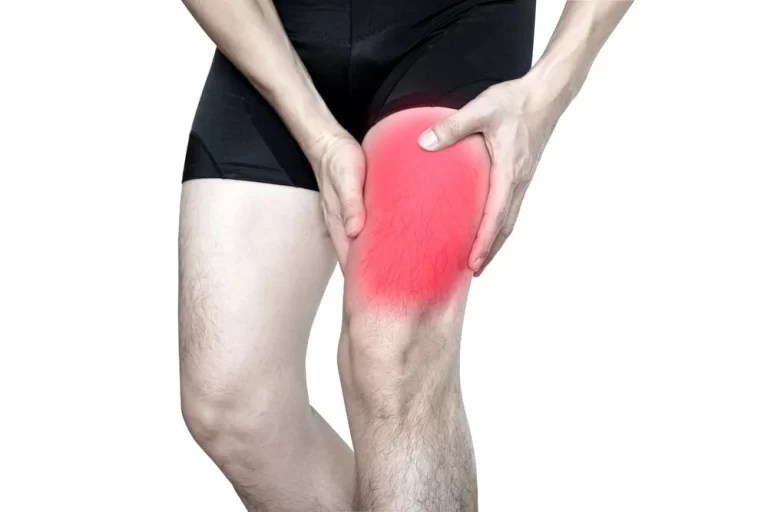Rib Pain
What is Rib Pain?
Rib pain refers to discomfort or soreness felt in the chest or upper abdominal area, typically along the ribcage. Whether rib pain is caused by inflammation, fractures, muscle strain, or underlying medical conditions, it is important to understand the elements that contribute to it. Identifying symptoms and implementing efficient management techniques are crucial components of a holistic strategy to reduce pain and improve the general quality of life.
Rib pain can result from a variety of diseases, ranging from moderate to serious, including heart attacks.
Causes of Rib Pain:
If your hurting ribs are not due to a heart disease, they may be caused by a:
- Pulled muscle
- Broken or bruised rib
- Internal injury
- Sports injury, accident, or fall
- Muscle spasm
- Inflamed cartilage
- Anxiety or other conditions
- Cancer
Injury:
Rib cage pain is frequently caused by injuries to the chest from falls, auto accidents, and sports-related contact. Injury types include:
- broken ribs
- bruised ribs
- fractured ribs
- pulled muscle
If rib cage pain starts after an injury, doctors may use an X-ray to show bone breaks and fractures. Soft tissue injury can be detected by MRIs and other studies.
Costochondritis:
- Tietze’s syndrome, also known as costochondritis, is another frequent reason.
- The costosternal joint, which connects the upper ribs to the sternum, is a region of cartilage in the rib cage that becomes inflamed in these conditions.
- Costochondritis can cause mild to severe rib cage pain that gets worse with movement, such as deep breathing, coughing, or stretching. The pain can also seem dull or acute.
- While some cases of costochondritis go away on their own, others need medical attention.
Infection
Infections can cause rib pain, including:
- upper respiratory infection
- bronchitis
- pneumonia.
Pleurisy, a torn rib muscle from coughing, or the infection itself, could be the cause of the pain. Inflammation of the pleura, the tissue that lies between the rib cage and the lungs, results in pleurisy. Pleurisy can also be caused by autoimmune diseases and some drugs.
Lung cancer:
In the US, lung cancer is the second most prevalent type of cancer.
Chest pain or rib cage pain that gets worse when you cough, laugh, or breathe deeply can be a symptom of lung cancer. Other signs and symptoms could be:
- coughing up blood or phlegm
- shortness of breath
- wheezing.
Lung cancer is the most common cause of cancer-related deaths among both men and women in the United States, and its prognosis is not as good as that of other types of cancer.
Individuals who have lung cancer in its early stages are more likely toReliable Source of Survival, emphasizing the value of prompt action.
Fibromyalgia:
According to the American College of Rheumatology, it is more prevalent in women and affects 2% to 4% of the population.
Pain from fibromyalgia might be aching, stabbing, throbbing, or scorching. Although they can affect any portion of the body, these pains usually start in the chest.
Pulmonary embolism:
When an artery leading to the lungs is blocked, it results in a pulmonary embolism. A pulmonary embolism can also result in the following symptoms in addition to rib cage pain:
- Shortness of breath
- Rapid breathing
- Coughing, including coughing up blood
- Anxiety
- lightheadedness
- Sweating
- Irregular heartbeat
Because there is less oxygen in the blood, pulmonary embolism is a dangerous condition that can harm the lungs and other organs. A doctor should be consulted by anyone who exhibits the symptoms.
Ten to thirty percent of patients who have a pulmonary embolism pass away within a month of being diagnosed, according to the American Lung Association. However, difficulties can be avoided with early diagnosis and treatment.
Symptoms of Rib Pain:
Pain from the rib cage might be felt above the navel, below the ribs, or in the chest. The symptoms of rib cage pain can vary because there are several possible reasons. Pain could be:
- sharp
- dull
- aching
- sudden
- slow to develop
- constant
- intermittent
- worse when breathing in or moving.
Other symptoms, such as breathing difficulties or rib pain, or bruises, may also be experienced by people. People should be aware of their symptoms since they can aid a physician in making a diagnosis.
Diagnosis:
- Describe the kind of pain you’re feeling and the movements that worsen it to your physician. Your doctor can decide which tests will aid in a diagnosis based on the sort of pain you’re having and the location of the pain.
- Your doctor may prescribe an imaging scan, such as an X-ray, if your pain began following an injury. Additionally useful are rib-detail X-rays.
- Your doctor will request a soft tissue imaging scan, such as an MRI, if your X-ray or physical examination reveals any anomalies, including an abnormal growth.
- You will receive an injection of a tracer, a tiny quantity of radioactive dye, for this test.
- Any irregularities in the bones will be highlighted in the image captured by this camera.
Treatment of Rib Pain:
- Rest and Keep Away from Triggering Activities: Recovery depends on allowing the ribs to heal.
- Painkillers: Acetaminophen and ibuprofen are examples of over-the-counter painkillers that can be used to control pain.
- Physical therapy: Stretches and mild exercises can help reduce stiffness and promote healing.
- Heat or Ice Therapy: Pain and inflammation can be reduced by applying heat or ice to the affected area.
- Bracing: Wearing a brace or rib belt may offer support in situations involving fractures or severe pain.
You can apply a cold compress to the affected area to lessen swelling if the rib cage pain is caused by a minor injury, such as a bruise or torn muscle. You can also use over-the-counter painkillers like acetaminophen (Tylenol) if you’re in a lot of pain.
Your doctor may recommend additional drugs and a compression bandage if over-the-counter medications are ineffective in relieving pain from an accident.
In order to stop additional damage and increased agony, the compression wrap keeps the area securely in place. These wraps are only required in extreme circumstances, though, as breathing becomes difficult due to the compression wrap’s tightness. This may make you more susceptible to pneumonia.
Your doctor will talk to you about your treatment options based on the type and origin of bone cancer whether it is causing your pain. Your doctor will be able to determine if the cancer began in the ribs or spread from another part of the body. To remove or biopsy problematic growths, your doctor might recommend surgery.
Surgical removal may be too risky or not feasible in certain situations. In certain situations, your doctor can decide to use radiation therapy or chemotherapy to make them smaller. They might perform surgery to remove the tumor once it is sufficiently small.
Home Remedies for Rib Pain:
- Exercises for Deep Breathing: Calm, regulated deep breathing can help manage pain and avoid respiratory issues.
- Enhancement of Posture: Keeping proper posture lessens the load on the ribs.
- Hot baths or showers: Warm water helps ease pain and relax muscles.
- Topical Analgesics: Localized relief can be obtained with creams or patches that include analgesic chemicals.
Prevention of Rib Pain:
Maintaining proper posture throughout everyday tasks and avoiding abrupt or excessive twisting motions that can strain the rib joints and chest muscles are crucial for preventing rib pain. Regularly doing strengthening and stretching exercises can help increase core stability and flexibility while lowering the chance of injury.
It’s also essential to use safe lifting techniques and wear protective gear when participating in contact sports. Rib pain can also be reduced by avoiding extended periods of inactivity and making sure that you are using the right ergonomics when working or sitting.
Complications:
Untreated rib pain can result in several problems, such as persistent pain, limited movement, and trouble with daily activities like bending, coughing, and deep breathing. In addition to causing bad posture and muscular imbalances, persistent rib pain can worsen the problem.
If left untreated, underlying causes such as internal organ damage, lung infections, or rib fractures can sometimes worsen and pose major health hazards. Prolonged pain can also have an impact on mental health and sleep quality, which may result in anxiety or despair.
Prognosis:
Rib pain’s prognosis is mostly determined by its underlying cause and prompt treatment. With rest, rehabilitation, and the right care, mild to severe rib pain caused by a strained muscle, a little injury, or inflammation usually goes away in a few days to weeks. If there are no complications, rib fractures usually heal in six weeks, although they can take longer.
Treatment may be necessary for severe or chronic rib pain associated with internal organ problems or diseases like arthritis. Overall, the prognosis for rib pain is favorable with the right diagnosis and care, and most patients can recover completely.
Conclusion:
Although muscular strain is frequently blamed for rib pain, there are other causes as well, which can affect comfort and day-to-day functioning. For optimum well-being, it is essential to identify symptoms, comprehend the underlying causes, and implement efficient management techniques.
A complete approach is necessary to handle rib pain, ranging from rest and pain medication to home cures and expert medical assistance. Even though many situations can be handled at home, severe or chronic pain needs prompt medical attention to guarantee a proper diagnosis and course of therapy. Maintaining proper posture, putting rib health first, and taking preventative action all improve general comfort and quality of life.
Rib cage pain can have many different reasons, many unrelated to a major condition, and may go away on its own. Other situations, meanwhile, can call for long-term care and medical intervention. A sickness or condition not on the above list could be the source of the rib pain. It is beneficial to keep an eye out for and notify a physician of any additional symptoms that may accompany the rib cage pain. To determine the underlying cause of rib pain, a physician may do imaging tests or a physical examination.
FAQs
How can someone who has rib pain sleep?
Try using pillows or a wedge pillow to raise your upper body as you sleep, and think about sleeping on your unaffected side with a pillow between your knees if you have rib pain. Before going to bed, deep breathing exercises and relaxation methods can also help control pain and enhance the quality of your sleep.
Are ribs really serious?
Sore ribs can result from a variety of injuries, such as a pulled muscle, a broken or bruised rib, or even acid reflux. However, rib cage pain can occasionally indicate a more serious condition, including cancer or a heart attack.
How can rib pain be tested?
A medical professional may listen to your lungs, feel lightly on your ribs, and see how your rib cage moves while you breathe as part of the physical examination. The diagnosis may be aided by one or more of the imaging studies listed below: X-ray.
Which drug is most effective for treating rib pain?
Over-the-counter medications such as naproxen (Aleve) or ibuprofen (Advil, Motrin) can be useful for mild to moderate rib pain. Tylenol, or acetaminophen, is an additional choice. Stronger painkillers including codeine, dihydrocodeine, or even intravenous morphine may be required in certain situations, particularly for fractures or excruciating pain, although they need a prescription from a physician.
Can rib pain result from prolonged sitting?
An intercostal muscle strain can result from anything from bad posture to prolonged desk sitting. According to Vasudevan, a weak core and poor stability might increase rib pressure and cause pain.
Which physician treats rib pain?
Your lungs and other important organs in your chest are protected by your ribs and rib cage. For this reason, an orthopedic physician should carefully evaluate a rib injury to ensure that the organs it protects are unaffected.
Which factors are frequently responsible for rib pain?
Internal organ disorders, rib fractures, costochondritis (inflammation of the cartilage linking the ribs to the sternum), and muscular strains are common reasons.
How can rib pain be identified and managed?
A review of medical history, a physical examination, and maybe imaging tests are all part of the diagnosis process. Depending on the underlying cause, treatment options may involve rest, pain management, or addressing the particular medical problem.
Without an injury, what causes rib pain?
Costochondritis, infection, lung cancer, fibromyalgia, and pulmonary embolism are a few conditions that might produce rib pain that isn’t caused by an injury.
References
- Leonard, J. (2024, November 26). Causes of rib cage pain and what to do about it. https://www.medicalnewstoday.com/articles/318115
- Sakra world hospital. (n.d.). Sakra world hospital. Sakra World Hospital. https://www.sakraworldhospital.com/symptom-detail/rib-pain
- Kahn, A. (2023, February 6). What causes rib pain and how to treat it. Healthline. https://www.healthline.com/health/rib-cage-pain
- CARE hospitals. (n.d.). CARE Hospitals. https://www.carehospitals.com/symptoms/rib-pain
- RIB pain | Aurora Health Care. (n.d.). https://www.aurorahealthcare.org/services/heart-vascular/conditions/rib-pain







